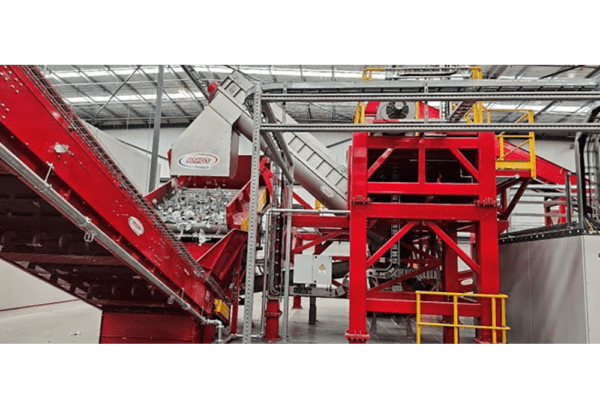
Should we be Reducing the Use of Multilayer Film?
In this blog, plastics recycling company Vanden Recycling examines whether the flexible packaging industry should be reducing the use of multilayer film – a question on the minds of most brands, retailers and converters.
The worlds’ love-hate relationship with plastic continues. It starts and ends with consumers who are dictating their demands and expectations, founded on environmental and ethical concerns. This is driving a need for change in the use, type and volume of plastic in packaging and adherence to strict aesthetic ideologies.
Europe has progressed further than other countries when it comes to sustainability and recycling. While the infrastructure still requires significant development, the EU directives are forcing change. Many countries across the continent implement their own, more aggressive targets that include fees for non-recyclable packaging.
If this wasn’t already a challenging enough task, only those within the plastic packaging industry would know the technical considerations that have to be overcome to meet the general public’s demands and expectations. For now, our understanding is that for many manufacturers of flexible packaging, multilayer film remains a staple part of their offering and an application in which recycled resins can be used.
Before we begin the multilayer vs. monolayer debate, let’s recap on the benefits of multilayer films and why they are used in plastic packaging.
What are multilayer films, and why are they so important in packaging?
Also referred to as co-extruded films, because of the co-extrusion process used during manufacturing, multilayer films can be comprised of between three – 12 layers.
These barriers play a critical role in preserving the items inside, which is why multilayer film is used heavily in the packaging of food, FMCG and medical items. This structure protects goods and preserves shelf-life by controlling the transmission and concentration of moisture, UV, oxygen, and gasses and providing mechanical and physical properties like puncture, tear and heat resistance. The multilayer multi-material structures fulfil functionalities, where mono-material has limitations.
What plastics are used in multilayer multi-material film?
The thermoplastic layers in these films commonly consist of plastics such as:
- PE
- PP
- EVOH
- PA
- PET
PE is traditionally the most cost-effective component, and therefore the most widely used. Ironically, it is also suitable for kerbside recycling, making it easier for the public to dispose of in a way that guarantees its re-entry into the supply chain – IF it was being used in a monolayer and mono-material film.
When layered with PA (in a PE/PA polyethene/polyamide composition) or EVOH, for example, it is inherently challenging to reprocess and be used in the manufacturing of new products—limiting the recyclability of flexible films.
Why are multilayer films challenging to recycle?
In mechanical recycling, recycling these multi-material structures can be rather difficult due to the varying melting temperatures of the polymers and their different mechanical properties. Thus, this material stream is considered in multiple cases non-recyclable (or very difficult to recycle) via mechanical recycling and only recyclable in the chemical recycling stream.
Why is the industry talking about reducing the use of multilayer films?
More brands and retailers are striving to meet consumer and legislative demand. The pressure is on when it comes to creating packaging that the consumer can easily recycle, and of course, in some countries – recycling infrastructure proves to be a further hindrance.
Many packaging teams for retail brands are now clearly defining the materials they will and won’t accept from brands and manufacturers. For example, Tesco is operating with a traffic light system:
Red – Not to be used as customers cannot easily recycle (UK)
- Polystyrene
- PVC
- PVdC (including layer within Complex Laminates)
- Expanded/Foamed/Density Modified Plastics
Amber – When functional requirements mean green materials are not an option
- Non-PE flexible film. OPP
- Multilayer films/complex laminates
- Shrink sleeves
Green – preferred for UK recycling via kerbside or store
- PET
- HDPE/LDPE
- PP
- PE (recyclable at the front of the store)
- Mono lidding film matched to tray material when permanently attached
Why is the switch to monolayer film taking longer than expected?
Historically, the focus has been on reducing the weight and volume of material to lower packaging costs. In recent years, commitments are being made to reduce the plastic waste that comes from packaging.
The negative perception of plastic has led to around 26% of brands trying to reduce plastic use, while 60% are looking to emphasise recycling and the inclusion of a high volume of recycled plastic content. The final 14% are looking at innovative ways to promote systemic behavioural change with strategies that include partnering with environmental advocacy and academic sustainability groups, incentivising consumers to recycle and partner with suppliers to reduce consumption.
There is still much education required when it comes to the public perception of plastic.
The challenges that brands face come down to meeting legislative and consumer demand for sustainable, recyclable packaging whilst maintaining the quality of the product. Brands are also facing other pressures such as changing consumer preferences, e-commerce and costs. For this reason, those responsible for packaging are having to explore several avenues, experiment with packaging designs and rethinking their supply chains, finding partners that can supply reliable volumes of recycled material to keep up with manufacturing. There is also the argument around the trade-off between recyclable packaging, food waste and carbon footprint.
The use of multilayer film and the potential switch to monolayer/mono-material structure is a complex balance between weight, functionality and recyclability. Still, it’s encouraging to see brands, retailers, supply chains and converters increasing their conversations around the subject and really starting to address it head-on.
NB: Vanden Recycling has written this piece, and the original article can be found here.

Vanden Recycling
+44 (0) 2892668009
Website
Email





